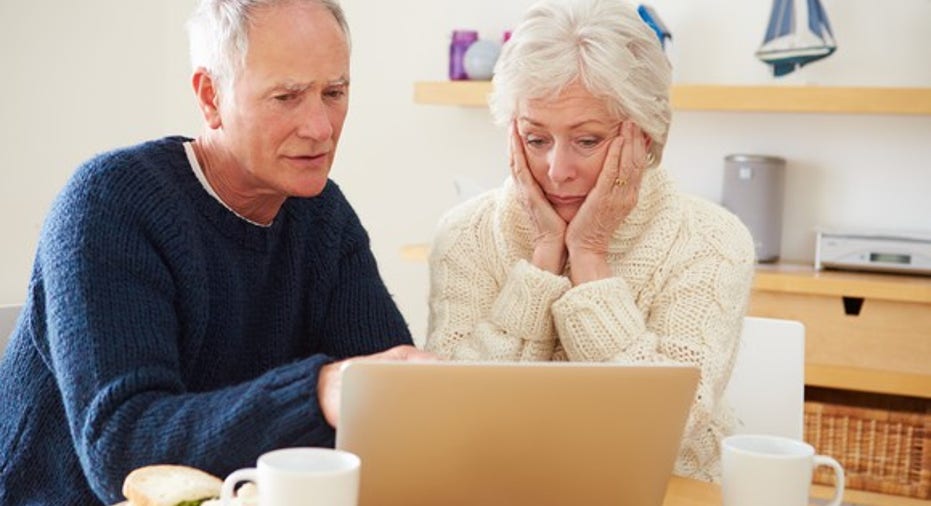Here's the newest technologies for seniors and their homes

More and more baby boomers approaching retirement age, want to stay in their homes. However, with the aging process at some point health issues come into play. As their need for assistance grows, the role of technology and support can be the key to aging in place.
Bo Preising, CIO at Suitable Technologies Inc. discussed with Fox Business aging in place and new technologies that are extending the period of time during which seniors can safely and happily remain in their homes.
Boomer: What is aging in place?
Preising: Aging in place refers to a person who is empowered to remain in their homes while maintaining their independence and social relationships for as long as possible. Through planning, the elderly would still get the medical attention that they need, but without losing quality of life during their senior years.
According to the AARP, 87% of seniors would rather age in the comfort of their own home, which can increase contentment and life span. Remaining in the home for as long as possible instead of transitioning to an assisted living facility or group home offers significant benefits to many seniors, and can mitigate symptoms of a wide range of physical and emotional illnesses.
Boomer: When should you start planning for aging in place?
Preising: To be successful, crucial elements need to be in place. Discussions of care options need to be done proactively while parents are still in good physical and mental health. These can be difficult conversations. Options also depend on financial and health factors as well as the preferences of the elderly. Senior care must be provided in a safe and effective manner, with regular consultations between caregivers, patient and family to ensure continuity of care. Planning should also include physical modifications to the living spaces, roles of various family members and friends during this time, as well as a clear plan of desired environment and care situation.
Both government entities and private-sector companies are likely to provide additional solutions to support seniors' efforts to age in their own homes. Regardless of the source, technology must play a central role in supporting the key objective: maintaining meaningful interactions between seniors and their caregivers and/or families. Remaining in the home instead of transitioning to an assisted living facility or group home offers significant benefits to many seniors, and can mitigate symptoms of a wide range of physical and emotional illnesses.
Boomer: What new technology is available for seniors to remain in their homes as they age?
Preising: Smart home technology from a variety of sources play a central role in supporting the key objective: maintaining meaningful interactions between seniors and their caregivers and/or families. And fortunately, the seniors of today possess considerably more technological knowledge, and comfort with technology, than their predecessors, improving the potential for successfully aging at home.
Wide hallways and smooth floors can assist seniors who use canes, walkers or wheelchairs. Installation of smart lighting with voice-activated controls provides active residents with bright environments throughout the home, while reducing energy costs. Voice controlled HVAC systems and phone systems eliminate the need to fiddle with dials or remember to turn on the heat or air conditioning. Bathrooms with railings, walk-in showers and heated floors provide reassurance and physical comfort.
Smart lighting can ensure that kitchens are brightly lit when in use, while turning off the lights afterwards. One of the primary dangers for elderly parents who live alone is the risk of fires related to cooking. The iGuardStove device works with either gas or electric stoves, reducing the potential for fires by automatically turning these appliances off after a set period of time.
Beds that automatically raise and lower themselves decrease the effort required to climb in or out, reduce stress on joints, and allow for appropriate elevation of the head or legs. Many such beds offer built-in controls for a TV or a radio.
Although smart homes provide valuable support to elderly parents, they cannot substitute for human interaction. Skype and FaceTime are adequate solutions to maintaining daily contact across long distances, but they require both participants in calls to effectively utilize an app. Similarly, although Amazon’s new Echo Show reduces the technological challenges associated with video calls, it still suffers from issues relating to small screen size and placement.
In contrast, Beam by Suitable Technologies combines mobility and video conferencing in an appliance-like device that eliminates the need for seniors to utilize any software. When seniors have a Beam in the home, faraway family members or health care providers can use the Beam App to instantly be present with them, while relying on Beam’s safe, reliable mobility to accompany them as they carry out household activities.
Doctors can use Beam to visit patients; children can use Beam to join elderly parents for chats, TV viewing, board games and meals, or simply to “check on things” before bedtime. Unlike more conventional methods of communication, seniors who communicate via Beam have no need to scramble to answer calls or carry a device to converse while moving from place to place. With Beam, they can keep in touch while preparing meals, relaxing in a favorite chair, or even lying in bed.